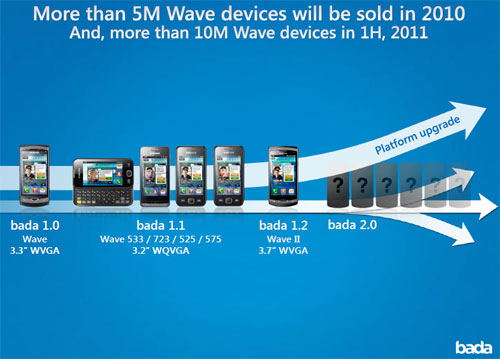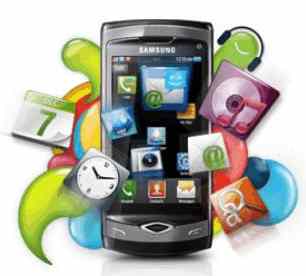| Is it time for bada? |
| Thursday, 23 December 2010 | |||
|
Samsung has been shipping more Wave phones in the past few months since its launch in June than any other smartphone manufacturer, except for Apple with the iPhone, and expects to sell around 5 million bada-powered handsets by the end of 2010. But does that mean developers should now be paying attention to bada?
Samsung Apps, the application marketplace installed on bada-powered phones has also benefited from Wave sales. Launched in France, Italy and the U.K. in September 2009, the app store is now available in 118 countries and the number of app downloads is expected to surpass 50 million by December 2010.
(Click to enlarge) The line up of Wave phones includes the original model which runs bada 1.0, the Wave525/ 533/ 575/ 723 running bada 1.2 and Wave II running bada 1.2. For bada 2.0 Samsung is promising additional smartphone-like features, including a better user interface, Near Field Communication (NFC), a smarter homescreen, SDK support for Linux and Mac and SNS integration. In view of this update mobile analysts are beginning to concede that bada is a true smartphone OS, whereas before they've been cautious to do so. The remaining issue for concern is that while bada is a proprietary, one-vendor OS, Samsung has not devoted its entire portfolio to bada - for example its popular Galaxy S runs Android 2.1. In other words, Samsung isn't 100% committed to the platform, unlike other vendors such as Apple with iOS and RIM with the BlackBerry OS. |
Why OpenSSF's Baseline Security For Open Source Projects Is Important 21/04/2025 The Open Source Project Security Baseline, or OSPS Baseline for short, is a new initiative by OpenSSF in an attempt to bolster the security posture of open source software projects. |
Hone Your SQL Skills With The Premier League 02/05/2025 Introducing sqlpremierleague, another sql playground, but with puzzles specific to sports. |
More News
|



